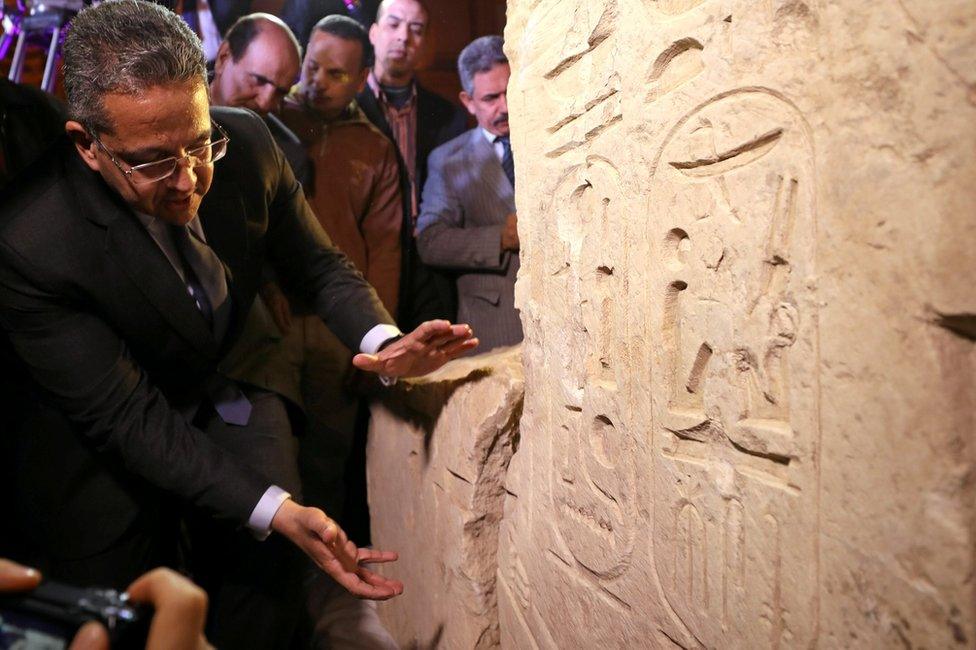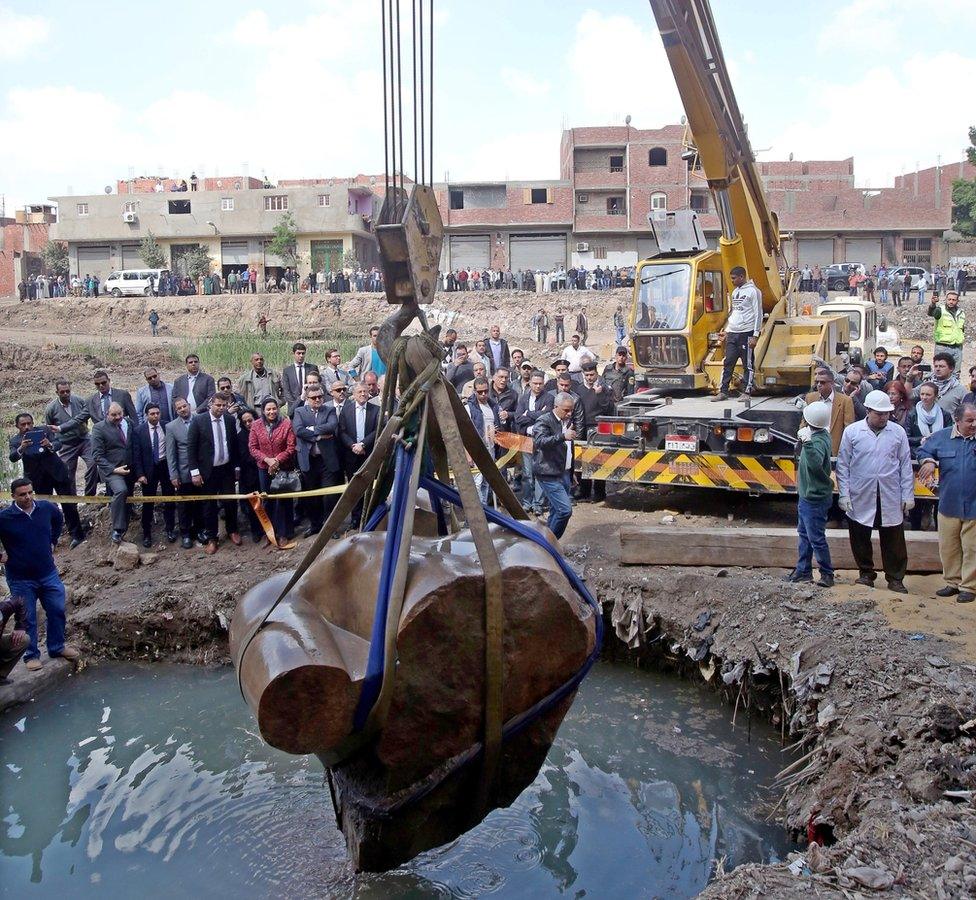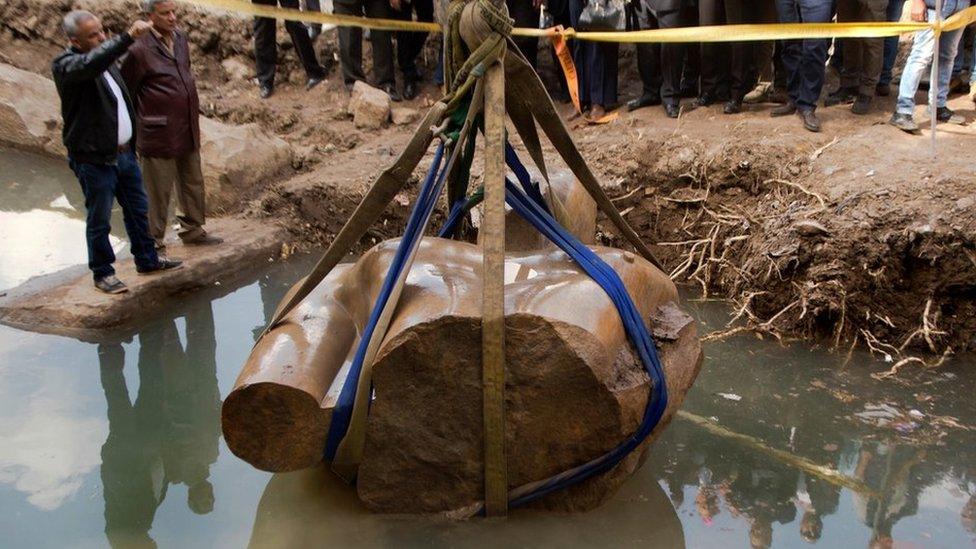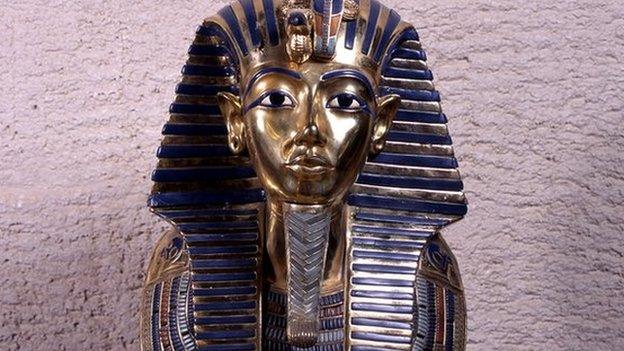Egypt Pharaoh statue 'not Ramses II but different ruler'
- Published

The massive statue - pictured with Denmark's Prince Henrik, left - was at first thought to be Ramses II, also known as Ramses the Great
An ancient statue which was pulled from the mud in Cairo is not the Pharaoh Ramses II, but could be another king, Egypt's antiquities minister has said.
Khaled el-Anani told a news conference the statue was almost certainly Psamtek I, who ruled between 664 and 610BC.
Experts had thought the statue was Ramses, who ruled 600 years earlier, because it was close to a temple dedicated to the ruler.
But one of Psamtek's five names was found engraved on the huge statue.
Even so, the find is still significant, Mr Anani said.
"If it belongs to this king, then it is the largest statue of the Late Period that was ever discovered in Egypt," Ahram Online reported, external him as saying.

Egyptian Minister of Antiquities Khaled Al-Anani explains new evidence pointing to it depicting Psamtek I in Cairo

Part of the torso was hauled from deep muddy groundwater using a crane on Monday
The discovery was made after they moved the statue - which was nine metres (29ft) tall originally - from a wasteland in between apartment blocks on the site of the ancient capital, Heliopolis, to the Egyptian museum in central Cairo.
It was found by an Egyptian-German archaeological team, and was partially submerged in water, and had split into a number of parts. Its torso alone weighed three tonnes.
The Ministry of Antiquities said it hoped the two parts could be put back together again.
Egyptian Antiquities Minister Khaled Al-Anani described "the big discovery of a colossus of a king"
- Published13 March 2017

- Published19 February 2015

- Published22 January 2015
